10 Things to Do in Fukushima: Sightseeing, Food, and Safety

Fukushima is filled with wonderful spots for travel, like Aizu Wakamatsu, Ouchijuku, Lake Inawashiro, and the Tadami Line. Read to learn about where to visit, activities, and local food. This article also introduces tips, from transportation to the latest safety information.

Ouchijuku in Fukushima
Fukushima is a prefecture located in the northern Tohoku region of Japan. With its great outdoors, delicious cuisine, and seasonal views, it is an ideal spot for you to visit again and again.
Since the incidents in 2011, Fukushima is now completely safe for visitors to travel in nearly all parts of Fukushima Prefecture.
In this article, we introduce the latest information on Fukushima, along with must-visit spots, cultural events, and delicious food.
Table of Contents:
Three Recommended Scenic Destinations
1. Tadami Line
2. Lake Inawashiro
3. Goshikinuma - Five-Colored Lakes
Six Retro Areas
4. Ouchijuku
5. Tsurugajo Castle in Aizu Wakamatsu
6. Sazaedo in Aizu Wakamatsu
7. Kitakata
8. Hanamiyama Park
9. Hot Springs Area of Fukushima: Higashiyama and Iizaka Onsen
Family-Friendly Spots
Two Seasonal Events
1. Soma Nomaoi
2. Miharu Takizakura
5 Must-Eat Dishes in Fukushima
1. Kitakata Ramen
2. Japanese Sake
3. Peach-Flavored Sweets
4. Fukushima Gyoza Dumplings
5. Sauce Katsudon
Fukushima Prefecture - Visit More than Once
1. Where Is Fukushima?
2. Getting to Fukushima
Three Recommended Scenic Destinations
Here we will suggest three spots in Fukushima with breathtaking beauty.
Tadami Line

Daiichi Tadamigawa Bridge Photo by Eri Miura. Picture from Why We Live In Fukushima: Interviews With International Residents
The JR Tadami Line is considered to be one of the most romantic railroads in the world. It is a local train line that runs between Aizu Wakamatsu and Niigata Prefecture.
In particular, the Daiichi Tadamigawa Bridge (shown above) is said to be the most beautiful spot to view the train line from. It is located between Aizu Hinohara Station and Aizu Nishikata Station, and is a great spot to see the train crossing over the Tadami River, surrounded by stunning nature.

Picture courtesy of Fukushima Sightseeing and Product Exchange Association
You can enjoy the area year-round, with vivid greenery in summer, yellow and red foliage in fall, and the beauty of snow in the winter.
Those who wish to see the lush outdoors should head to the observatory near the Station Stop, Oze Kaido Mishima Inn. A limited number of trains run on the Tadami Line, so be sure to check the time table (Japanese) to capture the shot you want. There is also a bus that goes from Aizu Miyashita Station to the Station Stop Oze Kaido Mishima Inn. The bus leaves once a day at 8:10 from Aizu Miyashita Station.
Daiichi Tadamigawa Bridge Observatory
Address: Fukushima, Onuma, Mishima, Kawai Google Map
Official Website (Time Table): Timetable for the JR Tadami Line (Japanese)
Lake Inawashiro
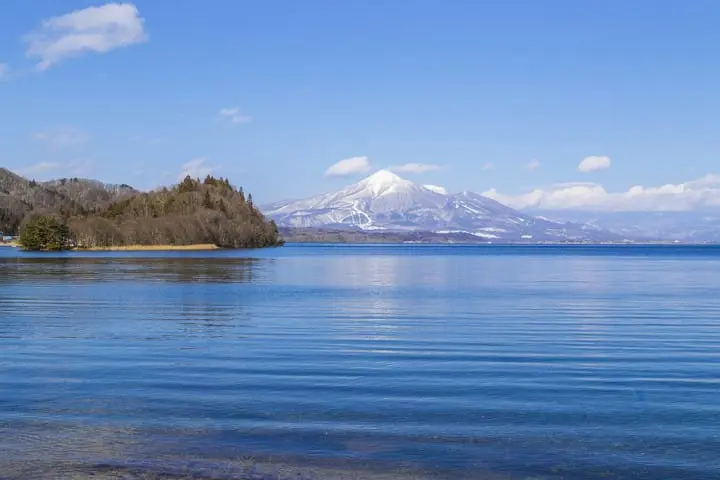
Mt. Bandai and Lake Inawashiro. Picture courtesy of Fukushima Sightseeing and Product Exchange Association
Another must-experience is seeing the magnificent view of Mt. Bandai reflecting against the shimmering surface of Lake Inawashiro. This lake is one the most iconic destinations in Fukushima.
There is a sightseeing boat on the lake, which sails around for around thirty-five minutes. Ride it to cruise across the calm waters, while taking in the refreshing breeze and scenery.
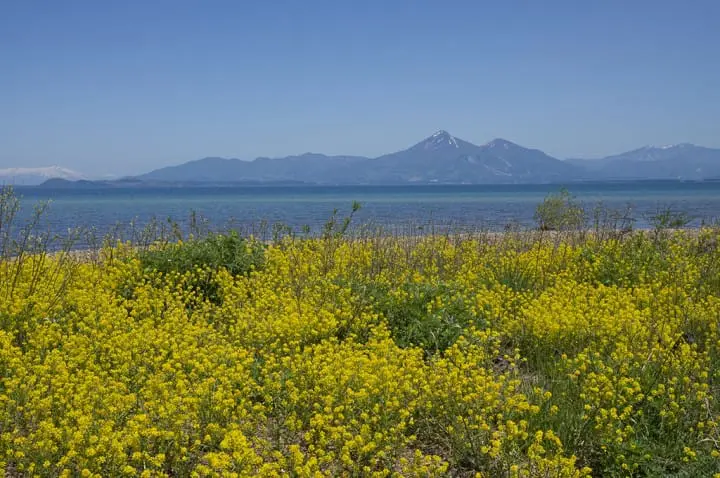
Picture courtesy of Fukushima Sightseeing and Product Exchange Association
Lake Inawashiro is the fourth biggest lake in Japan. In order to go see it, you will need to board a bus from JR Inawashiro Station and head to the northside of the lake. Other sightseeing spots nearby include Tenkyokaku, a villa once used by the imperial family that is a nationally-designated Important Cultural Property.
Lake Inawashiro (Bandai Sightseeing Boat Boarding Dock)
Address: Fukushima, Yama, Inawashiro, Okinasawa, Nagahama 870 Google Map
Website: www.aizubandai.com (Japanese)
Goshikinuma - Five-Colored Lakes
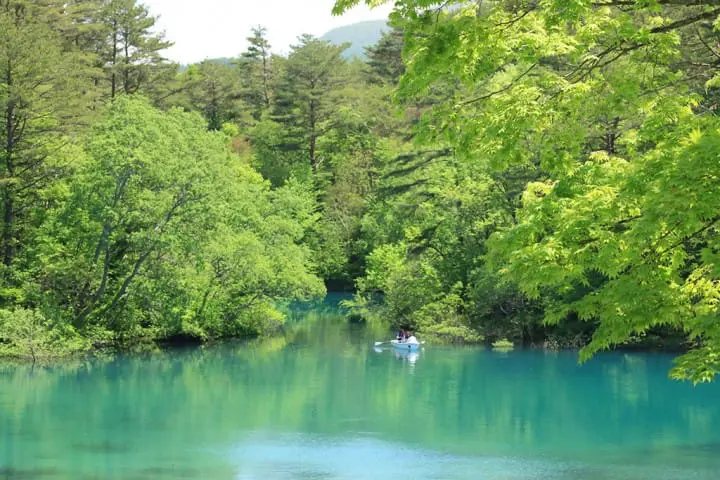
Picture courtesy of Fukushima Sightseeing and Product Exchange Association
Goshikinuma in Japanese means a marsh of five colors. As its name suggests, you can see an array of different hues at this marsh.
The twenty to thirty marshes in the area are collectively referred to as Goshikinuma. The bodies of water here show varying colors depending on the weather, season, surrounding scenery, or volcanic substances contained in the water.
It takes around one hour and ten minutes, to an hour and thirty minutes to see all the marshes. The course isn't too intense, so it is an ideal hiking route. At Bishamon Marsh, a relatively larger marsh, you can rent a boat and enjoy a scenic ride.
Goshikinuma Marsh Entrance
Address: Fukushima, Yama, Kitashiobara, Hibara Kengamine Google Map
Website: Goshikinuma Marsh (Japanese)
Four Retro Areas
Ouchijuku
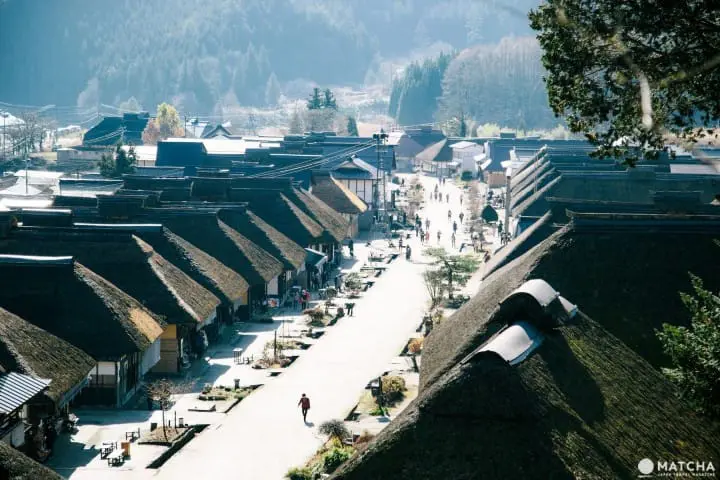
Photo by Eri Miura. Picture from All The Charms Of Japan In One Place! 10 Things To Enjoy In Fukushima
When you come visit Ouchijuku, you'll feel like you've slipped back in time to an old era of Japan!
Ouchijiku is located between Aizu and Nikko, and at one time functioned as a rest stop known as shukubamachi (*1) in the past. Here, you can see the remnants of a historic Japanese town with thatched roof houses from the Edo Period. Currently, these type of houses can only be seen in a few areas Japan, such as Shirakawago.
Locals still live in these houses, and some also operate as souvenir shops, soba restaurants, and cafes.
*1 Shukubamachi: A town where people took a break during their journey between cities during the Edo Period.
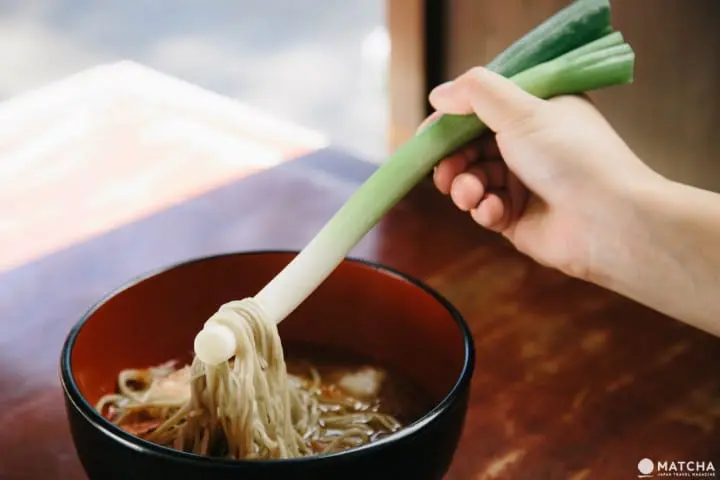
Photo by Eri Miura. Picture from All The Charms Of Japan In One Place! 10 Things To Enjoy In Fukushima
When in Ouchijuku, be sure to try Takato soba (buckwheat noodles), or negi soba (green onion soba.) It is a soba dish that comes with a whole stalk of green onion.
You can try this dish at several restaurants at Ouchijuku, but Ouchijuku Misawaya (shown above) was the original shop that began serving it. When eating this dish, you use the green onion instead of chopsticks to scoop up the fragrant noodles in the chilled dashi broth. The green onion is fresh, so you can eat it if you wish, but it can be a little spicy.
On a sunny day, you can sit outside and enjoy a refreshing bowl under the warm sun.
Ouchijuku
Address: Fukushima, Minamiaizu, Shimogo, Ouchi Yamamoto Google Map
Website: Ouchijuku (Japanese)
Aizu Wakamatsu - Tsurugajo Castle

Picture courtesy of Fukushima Sightseeing and Product Exchange Association
Tsurugajo Castle is an iconic castle in Fukushima. This is the only castle in Japan that has a roof made with red roof tiles.
Around this castle is where the Boshin War took place at the end of the Edo Period in 1868. The Boshin War was a series of civil battles between people for and opposing the Edo Shogunate (*2).
*2 Edo Shogunate: The government during the Edo Period was ruled by the Tokugawa Shogunate. Ieyasu Tokugawa was the first leader. Yoshinobu Tokugawa handed the government to the Meiji Emperor after fifteen generations.

Picture courtesy of Fukushima Sightseeing and Product Exchange Association
In the winter, this area gets snow from January to March annually, making this one of the few castles in Japan you can see covered in snow.

Photo by Eri Miura. Picture from All The Charms Of Japan In One Place! 10 Things To Enjoy In Fukushima
Tsurugajo Castle is located in Aizu Wakamatsu. The town is filled with antique-style buildings and fun shops, like Aizu Ichibankan, a historical house renovated into a cafe, and Suehiro Shuzo, where you can enjoy a tour of the sake brewery. The traditional structures can be seen around Nanokamachi Street and Noguchi Hideyo Seishun-dori Street.
Tsurugajo Castle
Google Map
Website: Tsurugajo Castle
Sazaedo Temple in Aizu Wakamatsu

At Sazaedo Temple, you can witness the world's one and only wooden double helix structure, measuring 16 meters high. The temple's double helix structure consists of six pillars in the center and six corner pillars. Often in Europe, you'll see spiral staircases built within historical church buildings, but in Japanese architecture you'll often only find basic straight staircases within temples.
Inside of Sazaedo, there are thirty-three statues of Kannon that are enshrined. The way this structure is built allows you to go around the thirty-three statues of Kannon at once, which was very popular amongst the common people when the temple was first built. Why not try climbing this intriguing double structure spiral staircase yourself?
Sazaedo Temple
Address: Fukushima, Aizuwakamatasu, Itsukimachi Oaza Yahata, Bentenshita-1404 Google Map
Operating hours: 8:15 to sunset (9:00-16:00 from January to March) *Open year round
Admission: 400 yen for Adults, 300 yen for high school students, 200 yen for elementary and junior high students
Access: [Aizu Bus] Machinaka Tour Bus Haikara-san Bus or Akabe Bus - alight at Iimoriyamashita Stop, 5 minute walk
Kitakata
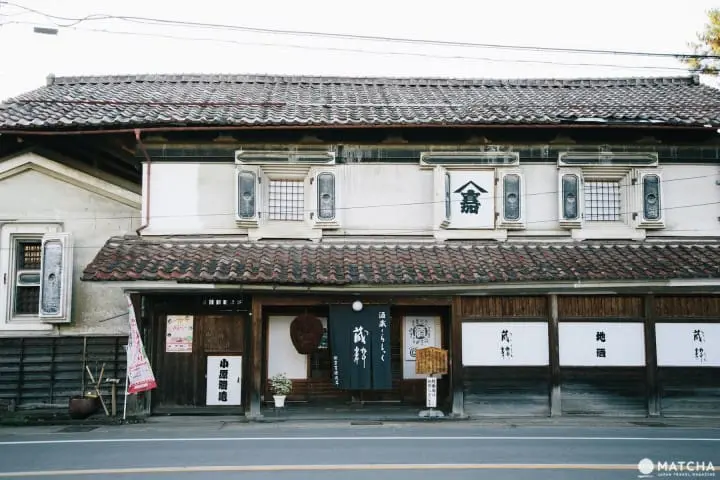
Photo by Eri Miura. Picture from All The Charms Of Japan In One Place! 10 Things To Enjoy In Fukushima
You will find many sturdy-looking structures and buildings when visiting Kitakata, located in northwestern Fukushima. These structures are called kura, and were originally built to protect valuables from fires and disasters.
There are many places that still use the kura for storage, while some kura have been renovated into souvenir shops and cafes open to the public. You can find many kura around Kitakata Station near Fureai-dori Street and Otazuki Kura-dori Street. Make sure to check out the unique ramen shrine if you drop by Fureai-dori Street!
Kitakata
Fureai-dori street: Google Map
Website: Kitakata (Japanese)
Hanamiyama Park
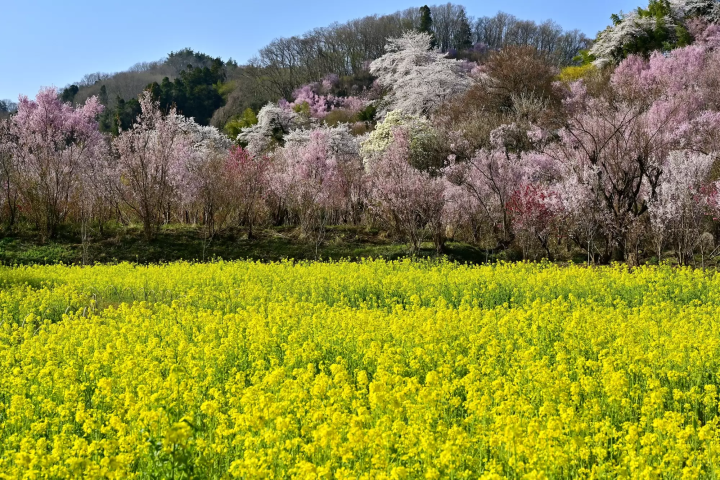
Although this park is run as a family business, the flowers trees that have been beautifully planted on the vast park grounds are worth visiting for a view.
Along with Sakura cherry blossoms, many varieties of flower trees such as forsythia, quince, magnolia, and peach trees can be seen here at Hanamiyama Park. When the spring season ends in May, hydrangeas and mountain lilies begin blooming from June.
Visit in April to view the park's masterpiece: sakura cherry blossoms and nanohana blossoms both blooming at the same time.
Hanamiyama Park
Address: Fukushima, Watari, Hara-17
Operating hours: 7:00 to 18:00 *Open year round
Admission: Free
Access: 15 minutes by taxi from JR Fukushima Station East Exit
Hot Springs Area of Fukushima: Higashiyama and Iizaka Onsen

Photo by Eri Miura. Picture from All The Charms Of Japan In One Place! 10 Things To Enjoy In Fukushima
Fukushima has the fifth largest number of natural hot springs in Japan. There are over 130 hot springs in the prefecture.
Located only fifteen minutes by bus from Aizu Wakamatsu Station, Higashiyama Onsen is a hot spring district with over fifteen ryokan. The iconic view of the hot springs is shown in the picture above, with the bridge extending across toward Ryokan Mukaitaki.
Mukaitaki is a historic building that has been designated as a cultural property of Japan. You can see the different meticulous construction techniques that have been used throughout the buildings. All twenty-four rooms have a different thematic design. Prime ministers, writers, and many celebrities have stayed in the area, and it has also been used as a filming spot for movies.
Higashiyama Onsen
Address: Fukushima, Aizu Wakamatsu, Higashiyamamachi Oaza Yumoto Google Map
Website: Higashiyama Hot Springs
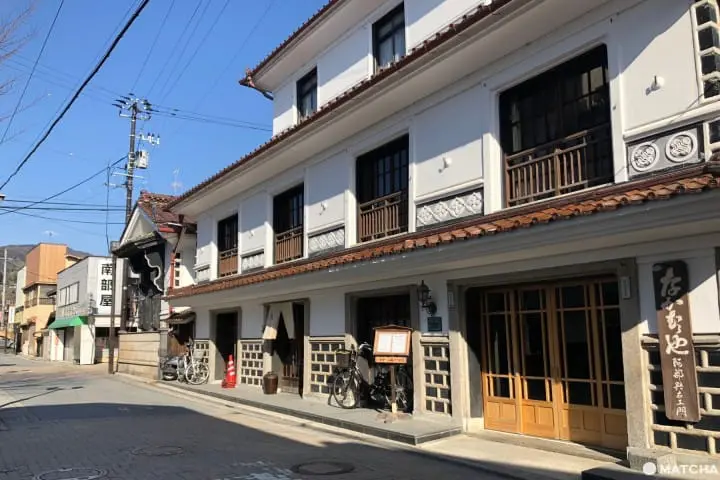
Pictured above is Iizaka Onsen, located twenty-five minutes by train from Fukushima Station. There are nine public bathing spots at this hot spring area.
Nakamuraya Ryokan is not a public bath, but an inn where you can use the hot springs without an overnight reservation. You can also use a private bath here. The building is also a designated Important Cultural Property of Japan.
Other sightseeing spots around Iizaka Onsen include the Kyu Horikiri-tei, which was a former house of a prestigious family.
Iizaka Onsen
Address: Fukushima, Iizaka, Yuzawa Google Map
Website: Iizaka Onsen
Family-Friendly Spots
Aquamarine Fukushima

Picture courtesy of Fukushima Sightseeing and Product Exchange Association
You will be absolutely stunned when viewing the huge tanks that Aquamarine Fukushima has. The large tank shows the collision between the warm and cold currents and contains 2050 tons of water, with over 120,000 creatures in the aquarium. There's also a touch pool that replicates the ocean floor, providing entertainment for all ages.
Ten minutes from the aquarium is Aeon Mall Iwaki Onahama, a large shopping complex with around 130 shops. Located slightly further away but in the same area is MEGA Don Quijote (located at La Park Iwaki), a large branch of the nationwide discount store, Don Quijote.
Aquamarine Fukushima
Address: Fukushima Iwaki, Onahama, Tatsumicho 50 Google Map
Website: Aquamarine Fukushima (Japanese)
Two Seasonal Events
Soma Nomaoi
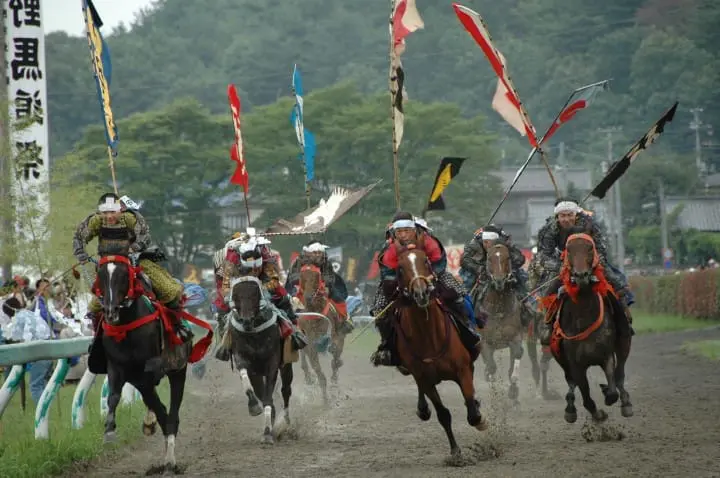
Picture courtesy of Soma Nomaoi Executive Committee
This stunning image is from a festival called Soma Nomaoi.
It is said that this festival began over 1000 years ago during the Heian Period by the warlord, Taira no Masakado. The main purpose of this festival was to capture horses that were released to the fields and to offer them to the gods.

The procession down the city streets. Picture courtesy of Soma Nomaoi Executive Committee
Soma Nomaoi is held for three days at the end of July every year.
The festival highlight falls on the second day, where you can see the procession through the city streets. Participants will be dressed in kacchu (*3), carrying flags passed down from their ancestors.
You can also see the Kacchu Keiba event, where ten men on horses storm through the fields. There's also the Shinki Sodatsusen match, in which people fight to catch the flags that fall from the sky.
Soma Nomaoi is held on the last weekend and Monday of July every year. For details, please check the official website (Japanese). On the second day of the festival, there is a free shuttle bus to the festival from JR Haranomachi Station.
*3 Kacchu: Armor worn by the samurai.
Soma Nomaoi
Hibarigaoka Festival Spot (the venue for Soma Nomaoi):
Address: Fukushima, Minamisoma, Haramachiku, Hashimotocho 4-13-27 Google Map
Website: Soma Nomaoi (Japanese)
Miharu Takizakura

Picture courtesy of Fukushima Sightseeing and Product Exchange Association
The Miharu Takizakura in Fukushima is one of the three largest cherry blossom trees in Japan. The word "taki" means waterfall, and like its name, the cherry blossoms cascade down like a waterfall.
This astonishing beni shidarezakura cherry blossom tree is over 1000 years old, extending 25 meters wide and 20 meters in height.

Picture courtesy of Fukushima Sightseeing and Product Exchange Association
During the cherry blossom season in mid-April, the tree is lit up beautifully at night. There is also a temporary bus that runs from JR Miharu Station and the Miharu Takizakura.
Miharu Takizakura
Address: Fukushima, Tamura, Miharu, Taki, Sakurakubo Google Map
Website: Miharu Takizakura (Japanese)
5 Must-Eat Dishes in Fukushima
Despite the incidents in 2011, all the delicious food you'll find in Fukushima is completely safe to eat. Passing Japan's food safety standards, one of the strictest in the world, all food goes through rigorous inspections for radionuclides and have been deemed safe to eat.
Kitakata Ramen
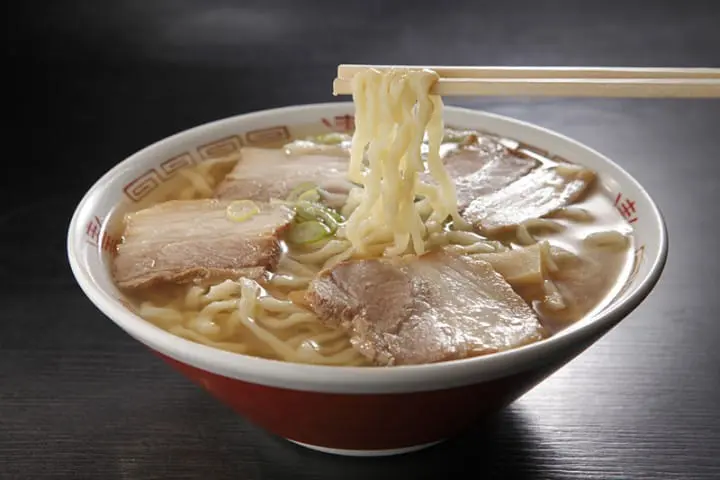
Picture courtesy of Fukushima Sightseeing and Product Exchange Association
A dish to try in Kitakata is Kitakata ramen, known for its light, soy sauce based soup. There is also a custom of eating ramen in the morning, so there are some shops that are open as early as 7:00 in Kitakata.
Shokudo Namae, Bannai Shokudo, Makoto Shokudo are all recommended ramen shops that are within walking distance of Kitakata Station.
Japanese Sake

Picture from Try Award-Winning Sake In Fukushima! Visit The Kingdom Of Quality Sake
Fukushima is one of the top sake producing locations in Japan. In 2019, they were awarded with the gold medal for the seventh straight year at the Excellent New Brew of Sake Awards Ceremony in Japan.
The flavor of Japanese sake changes drastically depending on the production area and the brewery. Try a cup at an izakaya in Fukushima, or sample some at a souvenir shop to taste the difference.
Peach-Flavored Sweets

Many types of fruit are grown in Fukushima.
Peaches, in particular, are a specialty of Fukushima, produced in the prefecture's northern region. Summers are hot in this valley area, and the heat brings out the sweetness from the peaches. The juicy, mouthwatering peaches made with clean water and rich minerals are a treat from Mother Nature.
Fukushima Gyoza Dumplings

Picture courtesy of Fukushima Sightseeing and Product Exchange Association
Fukushima gyoza is a specialty dish from the Fukushima City area, where dumplings are laid out in a circular form. Filled with Napa cabbage and other vegetables, the dumplings are crispy and fried. They make a perfect side dish for beer.
Sauce Katsudon

Picture courtesy of Fukushima Sightseeing and Product Exchange Association
Katsudon is a donburi dish where a pork cutlet is coated in egg and put over rice. However, in the Aizu area in Fukushima, you will get sauce katsudon, where the pork cutlet is soaked in katsu sauce. A layer of cabbage is laid over rice and is topped with a cutlet dipped in sauce.
The picture above shows a sauce katsudon from a town called Yanaizu. Fluffy egg is sandwiched between the cabbage and sauce-dipped cutlet in this dish. There are many different variations of sauce katsudon depending on the shop you go!
Fukushima Prefecture - Visit More than Once
Fukushima is a destination you want to keep on your visit list no matter how many times you've visited before!
Where Is Fukushima?
Fukushima is part of Japan's Tohoku area. It is the third largest prefecture in Japan and contains three major areas.
Hamadori is the coastal region, the Nakadori is the central region, and Aizu is the western region. Despite being in the same prefecture, each area is very unique, with distinct culture and natural landscape.
Getting to Fukushima

Sendai International Airport
If you are traveling from Sendai, there is a bus (Aizu bus) (Japanese) that goes to the Fukushima area. The bus from the airport is currently unavailable, but there is a route from Sendai to Aizu Wakamatasu (3,300 yen), and from Aizu Wakamatsu to Fukushima (3,300 yen).
There is a direct bus (Japanese) leaving from Shinjuku that goes to Fukushima as well. It stops at locations including Koriyama Station and Fukushima Station. It takes around five hours and costs around 5,100-5,500 yen, depending on where you alight.
From Tokyo, there is the Tohoku Shinkansen that departs from Tokyo Station and Ueno Station. Shinkansen stops include Koriyama Station and Fukushima Station. This area is included in the JR EAST PASS (Tohoku Area).
Experience the Best of Japan in Fukushima
Fukushima receives many international visitors each year, reaching 100,000 or more travelers staying in the prefecture, drawn by its nature-rich regions, culture, and delicious food.
Put Fukushima on your to-visit list and experience all this prefecture has to offer for an unforgettable trip.
Main image by Eri Miura
Read also
MATCHA Editer.











































![[Gunma] 5 recommended gourmet foods at Kawaba Denen Plaza Roadside Station!](https://resources.matcha-jp.com/resize/720x2000/2025/02/26-225970.webp)
![[Kanazawa] Enjoy the world of gold leaf to the fullest in the city with the highest production volume in Japan](https://resources.matcha-jp.com/resize/720x2000/2025/11/12-249564.webp)
![[2026] Family Winter Trip to Suzuka Circuit! – For Both Day trips and Overnight Stays!](https://resources.matcha-jp.com/resize/720x2000/2025/12/26-254097.webp)
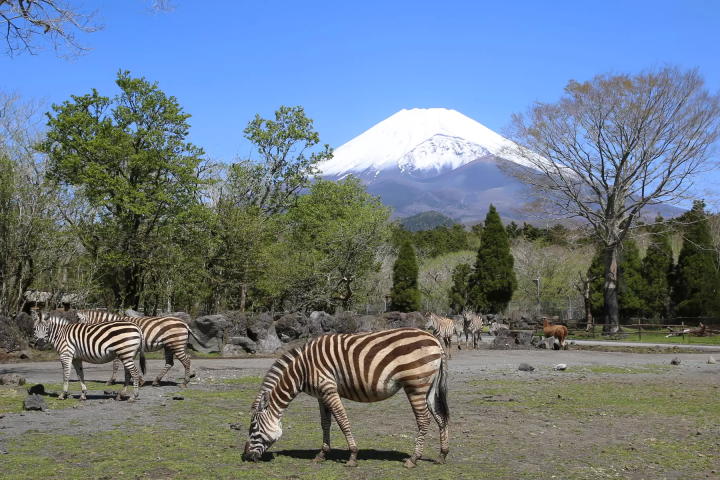
![[2026] Top 5 Strawberry Picking Spots in Tokushima, Naruto| Farms and Access Guide for January to May](https://resources.matcha-jp.com/resize/720x2000/2025/03/06-227165.webp)